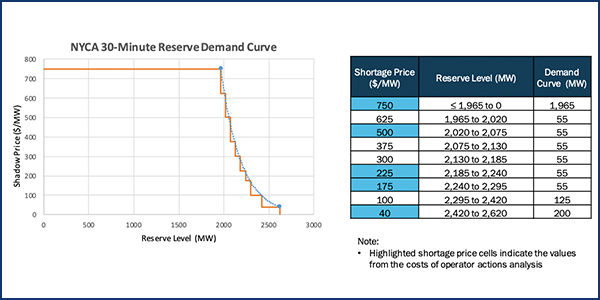As new solar and wind energy resources come onto the grid, NYISO is preparing to be able to adapt its reserve requirements quickly to a changing resource mix by procuring supplemental reserves during times of system uncertainty.
Supplemental reserve procurements can help provide for system uncertainty introduced by weather-dependent resources, both distributed and grid-connected, as well as potentially more volatile load, according to NYISO. It hopes to have a market design complete this year, Pallavi Jain, energy market design specialist, told the Installed Capacity/Market Issues Working Group on Tuesday.
NYISO is not proposing to add any supplemental reserve requirements now. Rather, it will propose Tariff revisions to establish the process and procedures for implementing requirements when warranted in the future, Jain said. The reserves would be priced lower than the proposed lowest shortage pricing value, $25/MWh, in tiers:
- Any 30-minute reserves: $10/MWh
- 10-minute total reserves: $12/MWh
- 10-minute spinning reserves: $15/MWh
To help determine the appropriate values, the ISO analyzed historic reserve shadow prices and reserve supply offers.
Stakeholder Concerns
Couch White attorney Kevin Lang, representing New York City, said he was concerned about extending undue discretion to the ISO to change reserve requirements without stakeholder authorization.
Increasing reserve requirements is in conformity with current practice, with any action taken brought to the soonest meeting of the Operating Committee, said Aaron Markham, director of grid operations at NYISO. “We want to be prepared to change quickly to meet reliability needs,” he said.
Brian Wilkie, manager for New York wholesale strategy at National Grid, suggested that the ISO could communicate its needs beyond the OC, as many stakeholders do not attend its meetings.
Michael DeSocio, NYISO’s director for market design, said there is a way to balance stakeholder concerns and still provide flexibility for the grid operator.
“We’re not delaying addressing any reliability needs, and still have the issue of developing the software we need,” DeSocio said. “I do worry that there is a notion that we can continue to rely on out-of-market actions … which is probably not in the best interests of consumers in the long run, nor in the best interests of achieving the state’s clean energy goals.”
Stakeholders were also presented a consumer impact analysis to aid further discussion of the proposal. NYISO currently plans to seek stakeholder approval of the proposal at the October meetings of the Business Issues and Management committees. If approved, the enhancements would be implemented in 2021, which the ISO expects to occur after implementation of the Reserves for Resource Flexibility project.




